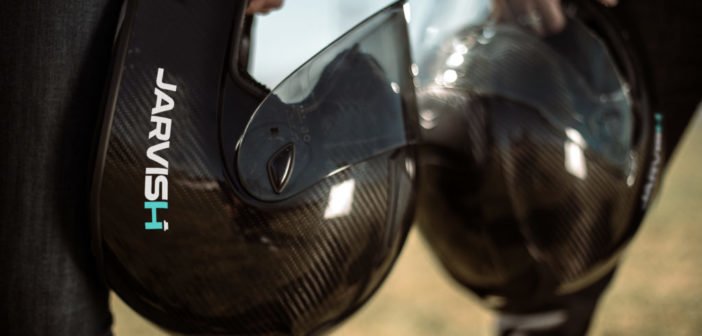The Jarvish AR motorcycle helmet combines form and function into one cutting-edge package.
It’s really a stroke of genius when you stop and think about it. On the one hand, there’s the growing appetite for augmented reality functionality among consumers; having real-time, hands-free digital information and applications overlaid onto our surroundings is, after all, the logical next step from the way we’ve become used to looking up information on mobile phones and interacting with AI voice assistants.
But there is, of course, the minor snag of fitting a decent-size field of view – and the processing power necessary to make all these wonderful functionalities work smoothly – into a normal-sized pair of glasses. Yes, huge strides have been made, and we’re getting closer, but current solutions are still only capable of providing simplistic visuals in limited field-of-view.
But what if your product already featured a naturally bulky design, one that could give developers room to play with in terms of processing and power? That’s exactly what Jarvish has set about doing with a new line of advanced motorcycle helmets, one of which even featuring augmented reality integration.
The company was founded in 2014 by a group composed of both motorcycle enthusiasts and members of the former Advance Technology Division (ATD) team at Foxconn. The team had previously produced a popular smart motorcycle helmet called the Jarvish X, which includes HD surround sound speakers, a noise reduction microphone, and front 2K camera as standard. However, their latest prototype, the Jarvish X-AR, steps the game up even further with a broad range of AR functions.
“The X and X-AR have been designed to enhance the motorcycling experience with smart features that mean a rider can focus on the road ahead without any distraction,” says Jeremy Lu, CEO of Jarvish. “Police officers in Taiwan are already wearing the first generation of Jarvish smart helmets, while on duty, to record their journeys, gather evidence and connect with police central command.”
This new AR helmet, which weighs around 1700g, was designed in Germany and features a pure carbon fiber shell. The HUD can be controlled and retracted easily via voice command and can integrate with services like Alexa, Siri and Google Assistant so that riders can use voice activation to control the cameras, make calls, play music, etc.

Image Credit: Jarvish
The X-AR includes an AR-powered head-up display (HUD) which uses maps and routing from HERE Technologies and allows users to input a destination by voice to receive audio and/or visual directions to the location in the helmet via the Jarvish app. The technology behind the display ensures that, even in bright light, these projections are always clearly visible.
The helmet has the ability to not only display directions, but also notify the wearer of traffic and weather conditions, indicators, speed, hazard road signs and incoming caller IDs on the HUD. It even shows 2K rear-view images so the rider has 360° visibility while on the road.
It also comes with a built-in front 2K camera and removable 16GB (optional up to 256GB) memory cards in the helmet. This means you can – if you’re that way inclined – broadcast your journey in real-time to your social media account by voice command, or just download the footage to your smartphone or upload to the cloud for later. The battery lasts for four hours of continuous use and supports wireless charging via micro-USB.

Image Credit: Jarvish
Their official Kickstarter raised over $200,000 in its first two days, crushing their original target of $50,000. They say the purpose of the campaign was not only to raise funding, but also to raise the company profile as they gear up to recruit more engineers and create a broader ecosystem of AR applications.
The Jarvish X-AR is currently selling at USD $1,599; not exactly pocket change, but not a ridiculous price point either, especially when compared to other top of the line helmets or even some of the newest smart glasses we’ve seen targeting the consumer market. The prototype certainly made a splash at CES earlier this month, and the company aims to start shipping the pre-ordered units by August 2019.




